Has making sourdough be one of your lasting memories of lockdown and 2020? It was for me, as I joined the tsunami of bakers frantically refreshing online order pages of flour stores, in my case Shipton Mill. I remember vividly an early morning in April when I made it through to an order slot and started planning bakes for my family.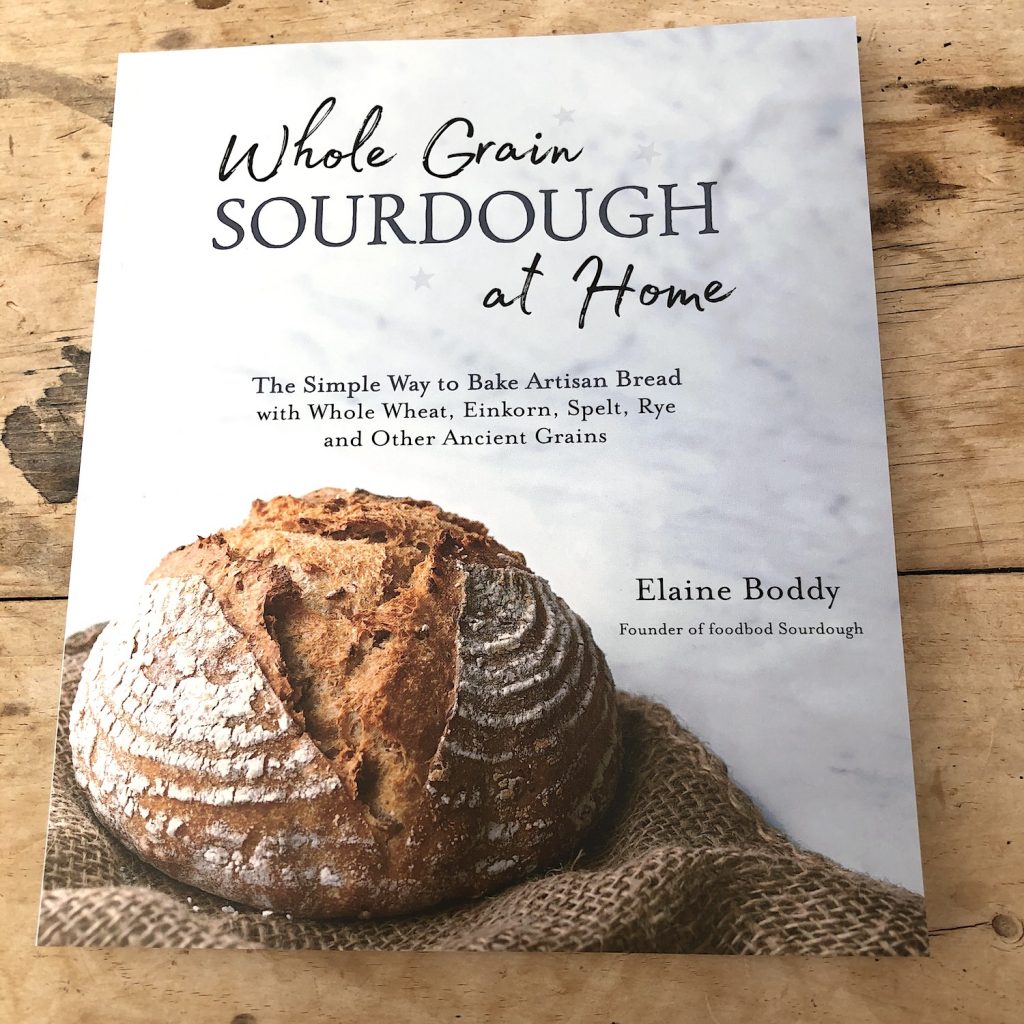
In August, I received a surprise gift of an advanced copy of Elaine Boddy’s “Whole grain Sourdough at Home”.
Ever since Karen Burns Booth and I joined one of Elaine’s sourdough workshops in January 2019, I’ve become an enthusiast for her method of sourdough baking. When the book arrived it meant I had a treasure trove of new recipes to explore.
Elaine’s introduction sets out clearly her approach to sourdough and her passion, like a sourdough starter it bubbles off the page. The book has a welcome absence of percentages, jargon, complicated and time-consuming recipes. The first part of the book explains how to make a strong white sourdough starter and starters from whole wheat, emmer and rye. Also, how to look after them with extensive tips and answers to frequently asked questions; a cornucopia from Elaine’s workshops, Instagram and Facebook pages.
Following step by step instructions on how to make Elaine’s master recipe with strong white flour, the reader is introduced to variations using other flours and ingredients.There are plenty of illustrations to guide the reader through the stages from mixing the dough, to shaping and folding, to scoring and baking. As a convert to the “cold bake” method, I was pleased to see this included along with instructions for baking sourdough in a pre-heated oven.
If the thought of baking large loaves ( 50g starter :500g flour) is not practicable in your household, the chapter Baby Masters might appeal. These recipes use 30g starter : 300g flour. I was so taken with the recipes in this chapter, I bought a smaller lidded casserole to keep purely for baby sourdough.
The latter part of the book has recipes for focaccia, sandwich loaves, biscuits ( US style) crackers and an intriguing chapter using alternatives to water.
Up until August I had little experience of baking with white spelt. I’ve made plenty of loaves with wholemeal spelt using fresh yeast. I was curious to try Elaine’s recipes either with 100% white spelt or mixed with other ingredients. Initially I was drawn to a couple of recipes, and as my delight in working with this flour grew, I made 8 recipes.
Poppy Seed Master p51
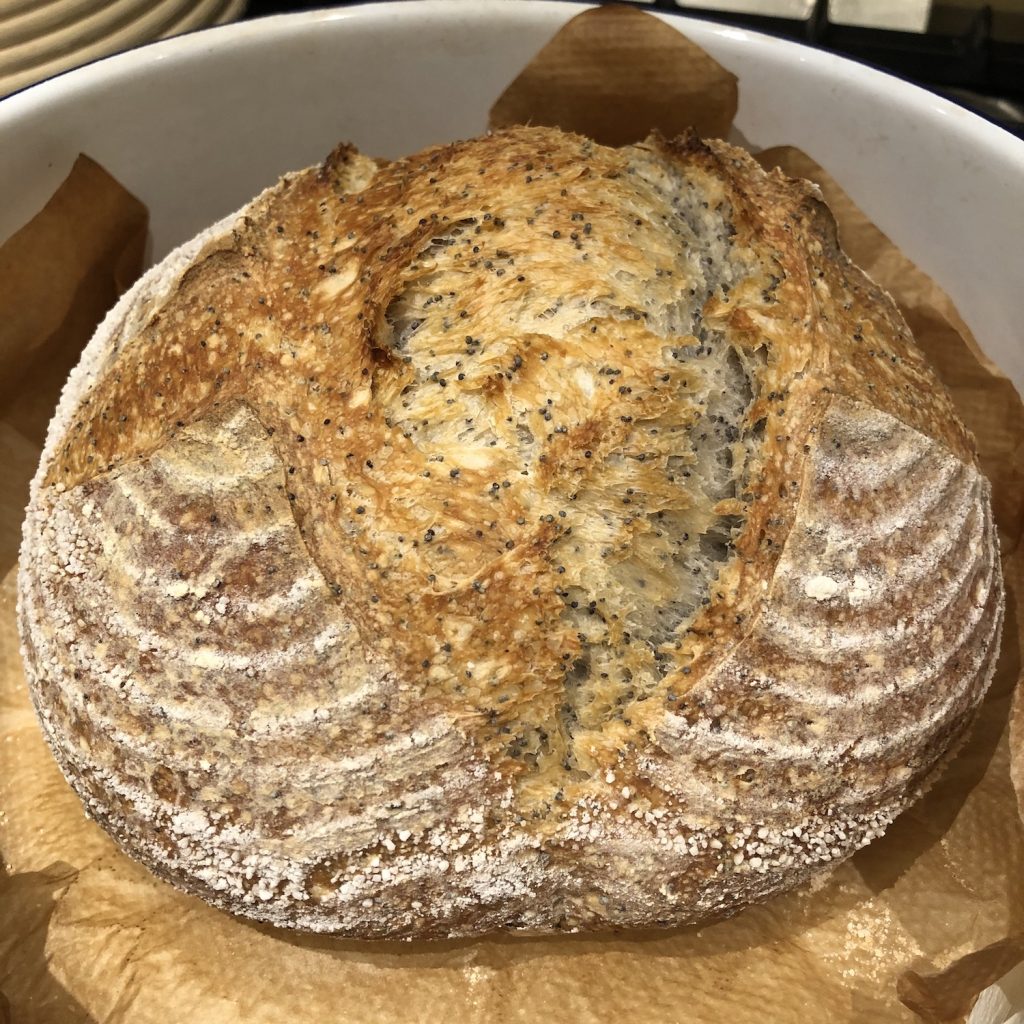
Seeds as well as spelt flour provide contrasts in flavour and texture in sourdough. I’m used to adding mixed seeds, e.g sesame, pumpkin, sunflower and poppyseed as a blend to bread, but adding just poppyseed was a first for me and I have to admit to wondering how the flavour and texture of the bread would be.
I was not disappointed as on cutting, I was immediately assailed with an intense aroma of poppyseed and an even distribution of the seeds through the loaf.
\
Walnut White Spelt Master p70
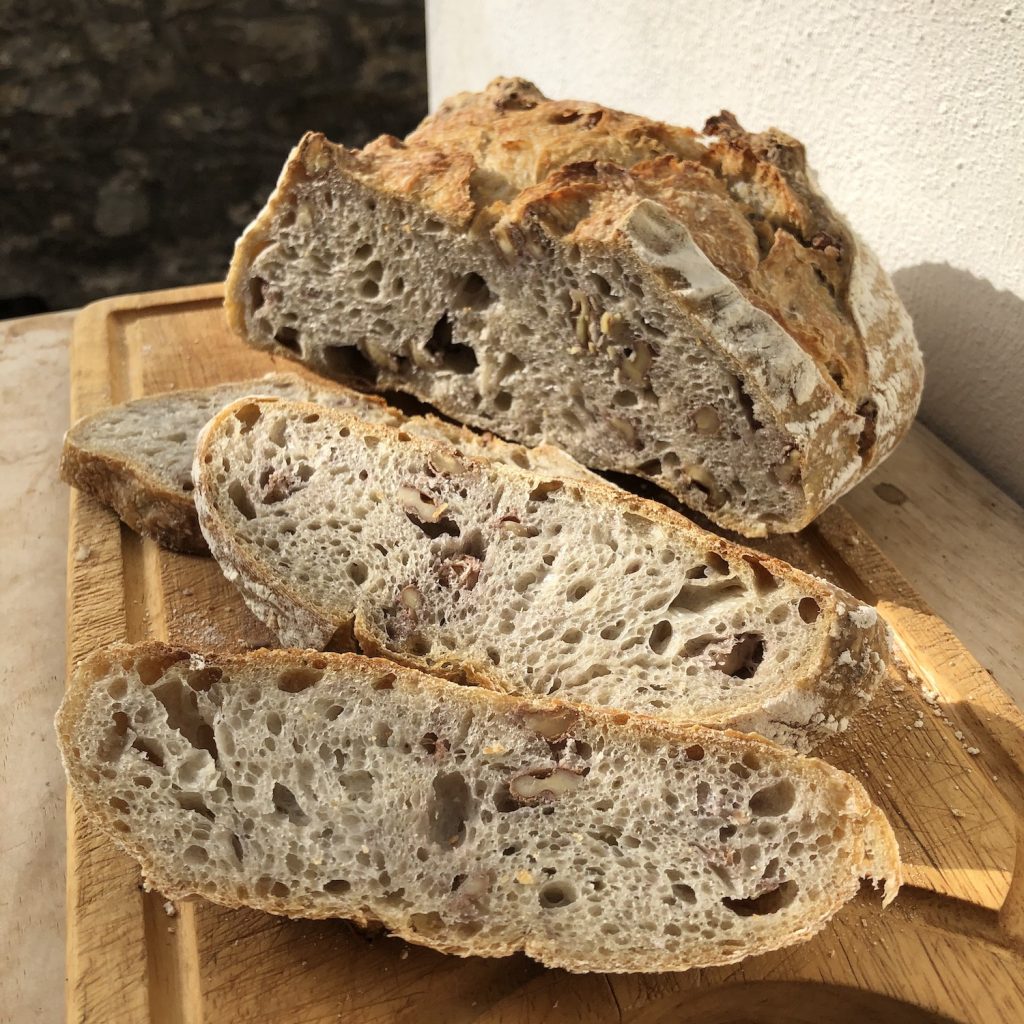
I regularly bake bread with walnuts so I was drawn to this recipe. The dough was easy to work with and the transformation from a craggy mixture to a smooth ball of dough after the intermittent stretching and folding was phenomenal
Once baked it had great oven spring, a chewy crust and an open even texture. The walnuts were well distributed throughout. When it came out the oven, it looked an impressive loaf and did not disappoint on tasting; one of my best bakes this year.
Flaxseeds and White Spelt Baby Master p 84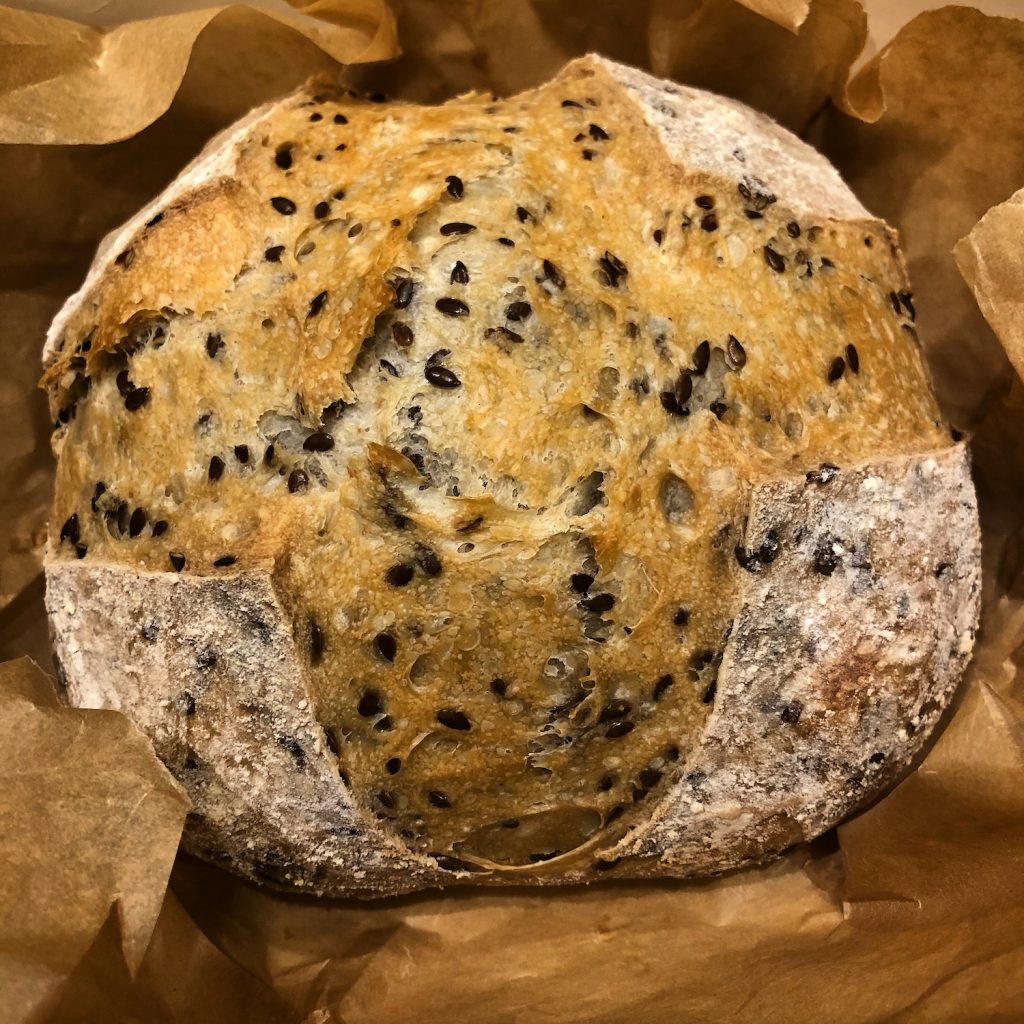
Flaxseeds are a good source of protein, fibre and omega-3 fatty acids. As Elaine points out in the introduction to the recipe, bread made just from white spelt “can be a challenge”. The flaxseeds provide support to the structure of the dough as well as flavour and texture. Another loaf with an even, open texture and an even distribution of seeds.
Almond, Raisin and Spelt Baby Master p88
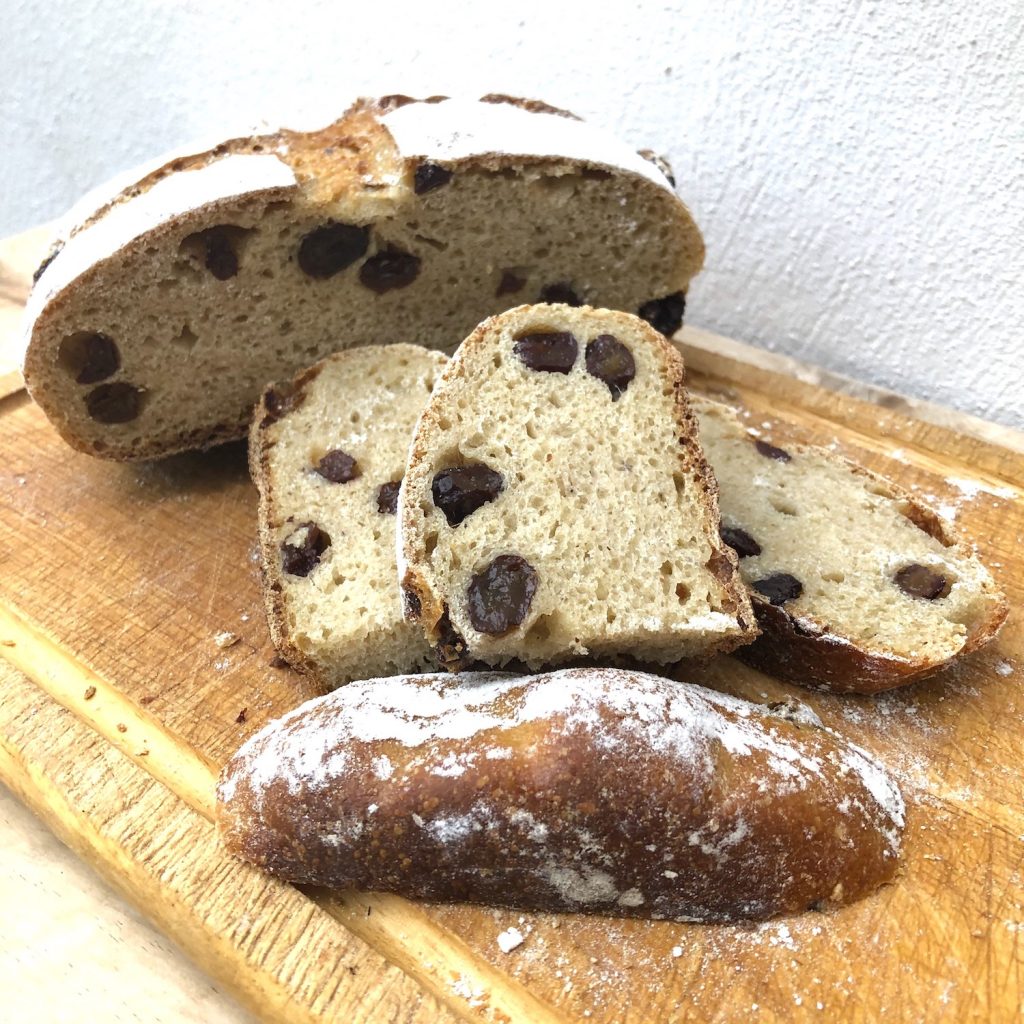
This loaf has a mixture of white spelt, ground almonds, raisins and honey. Not wishing to compromise the quality organic flour from Shipton Mill, I added Waitrose flame raisins and Blackbury Honey from a small producer in Colyton, East Devon, an Area of Outstanding Natural Beauty.
Once baked, cooled and sliced I was pleased to see the interior crumb looked similar to the photo in the book, always reassuring. The flavour was nutty from the flour and ground almonds combined with the sweetness from the raisins and honey.
Snowy White Spelt Sandwich Loaf p118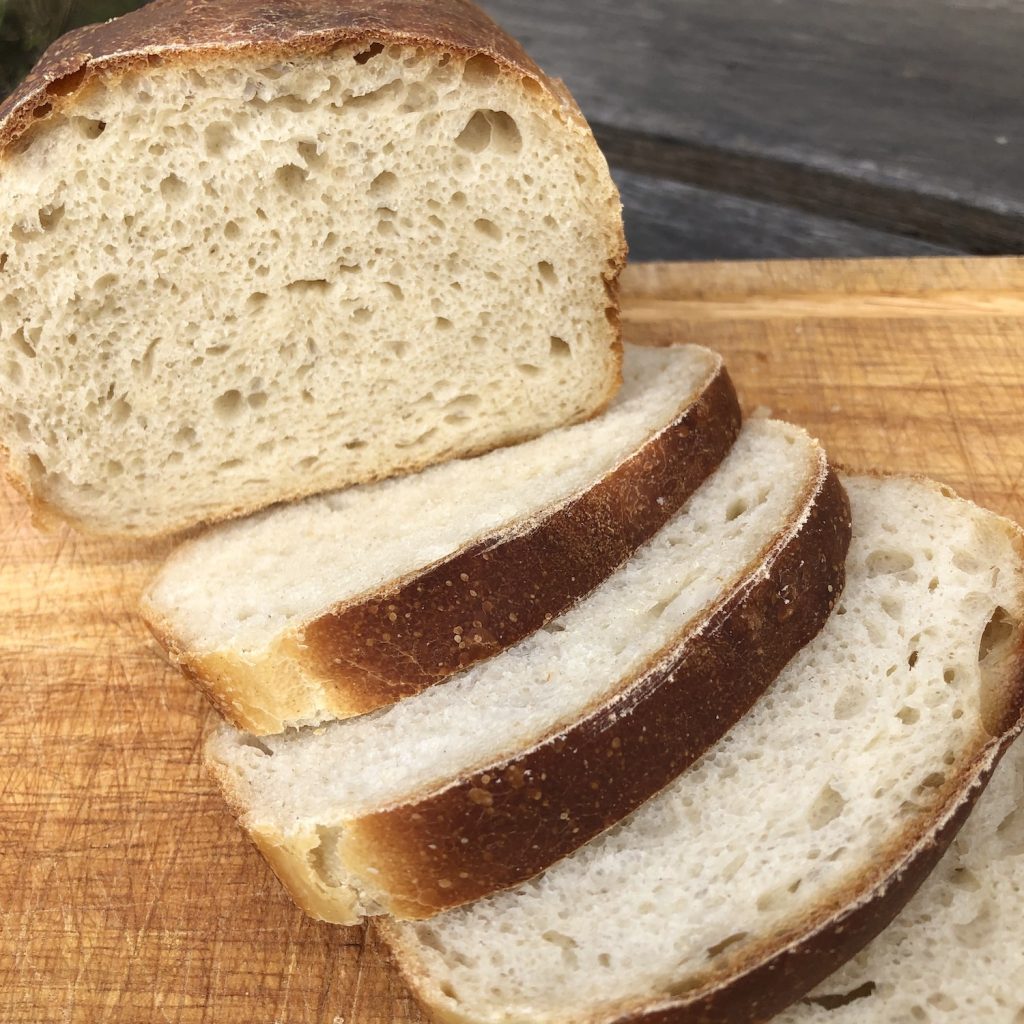
This was my first attempt at a loaf I wanted to share with our BnB guests who returned in July after a few months of closure due to COVID restrictions. The dough was quite wet to work with, but once the dough was developed and left overnight, it divided easily into two 450g loaf tins. The loaves had an even golden colour and a soft crumb, perfect bread for breakfast.
Oat Milk and Whole Wheat Sandwich Loaf p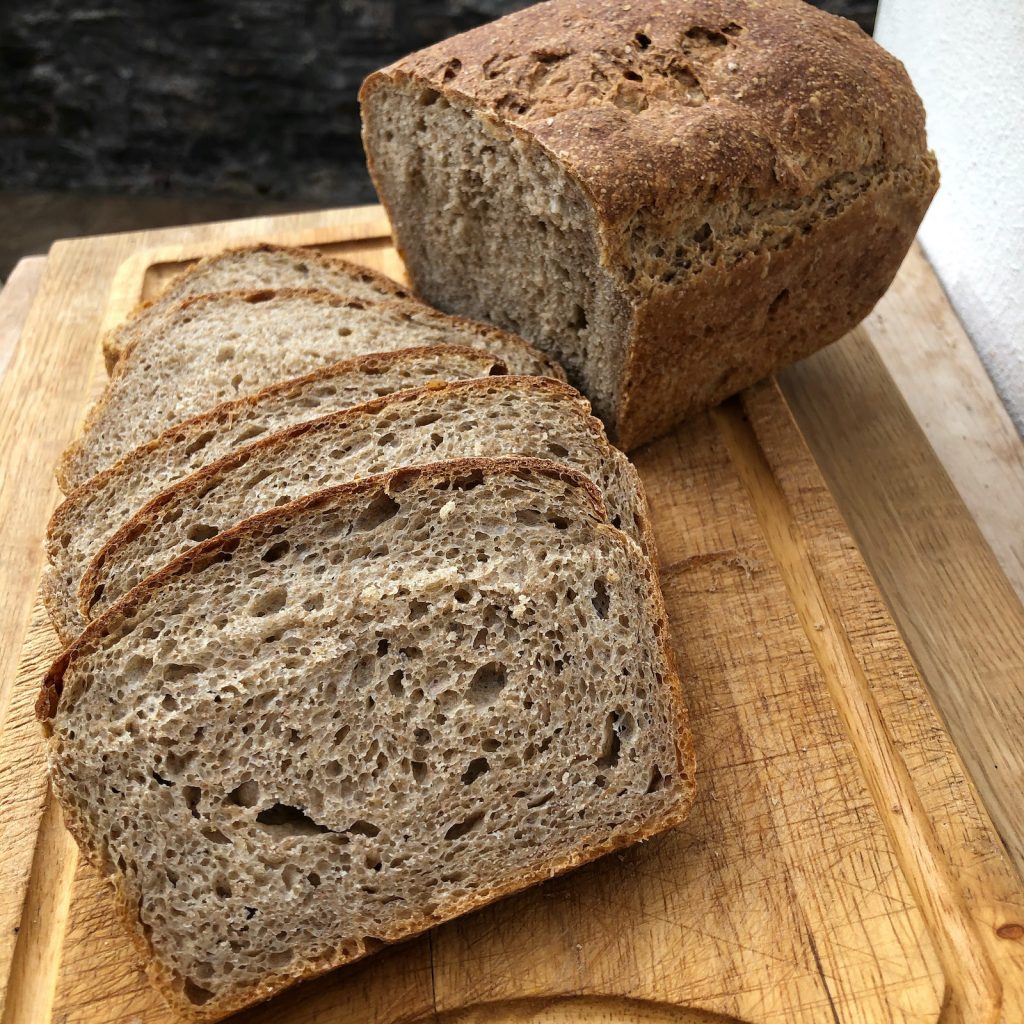
Another silky dough to work with and once again a change from using water in a recipe, this time an unsweetened oat drink, which tastes so good on its own, I’ve started adding it to muesli for breakfast.
White spelt is mixed with the same weight of whole wheat and for this recipe I used white spelt from Wessex Mill. The loaf had a moist and open crumb and received rave reviews from the family. Some breads become long term favourites, and this will be one of them.
Buttermilk White Spelt Master p162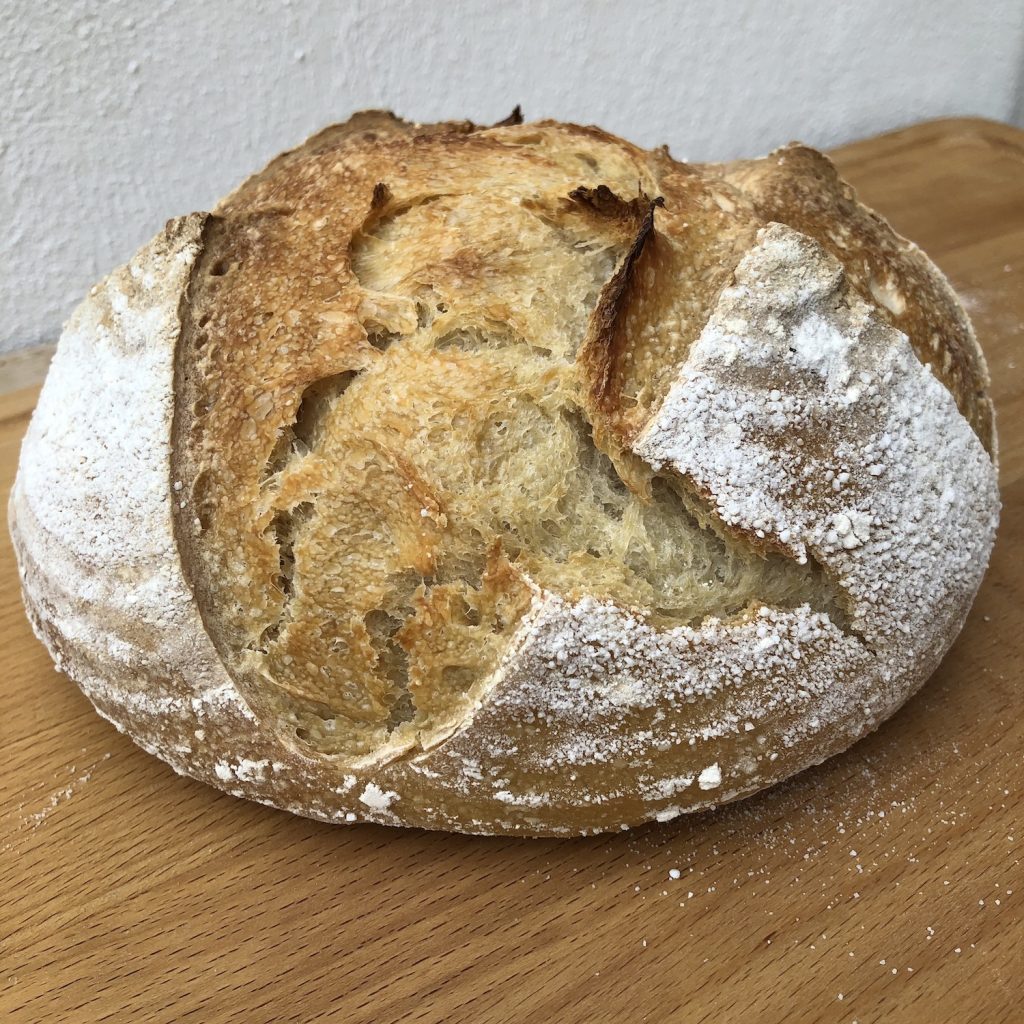
Using buttermilk instead of water was a first for me and I enjoyed the different feel of the dough as I worked with it. The flavour was rich and creamy and the bread was almost better toasted than fresh The dense, but moist texture shone through. I was impressed with how much the buttermilk complimented the flavour of the flour.
Sweet Potato and Spelt Master p168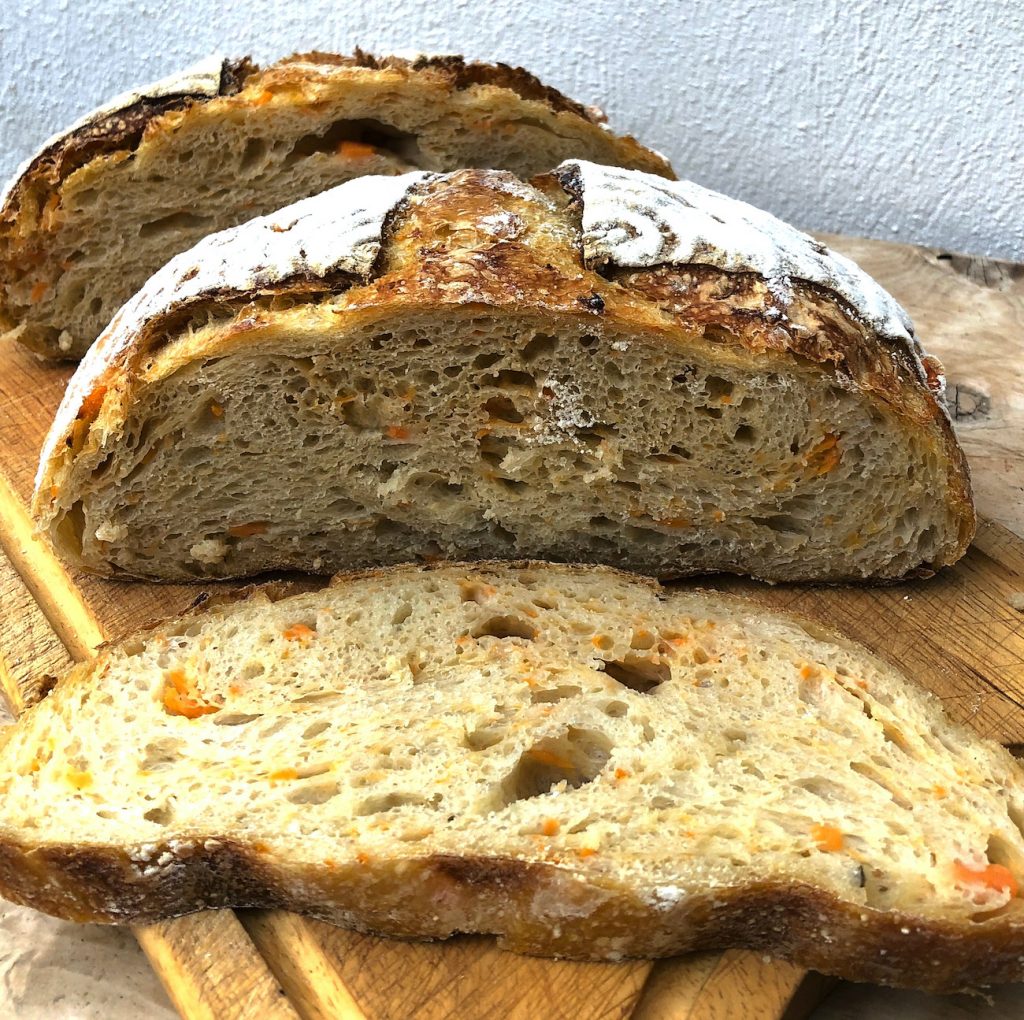
In October, Elaine tagged me into a challenge to make this recipe with a group of international bakers and to share our creations on Instagram on 1st November. How could I resist especially as the recipe included my now favourite flour, white spelt?
Although I was gaining familiarity with it, adding vegetables to the dough was new although I had added beetroot to another baker’s recipe in the summer. The dough felt unusual to work with as I contemplated the cubes of cooked sweet potato poking out of the surface. The vegetables broke down into orange flecks as I stretched and folded the dough before an overnight bulk ferment.
The following day, I was rewarded with an enormous loaf. It had a golden, soft crust and a moist texture.
Whole grain Sourdough at Home is a book for novices and experienced bakers, and inspired me to experiment with different ingredients with surprising results; an example of how I never stop learning about baking.
Links
Karen’s website Lavender & Lovage
Elaine website foodbod SOURDOUGH
Shipton Mill
